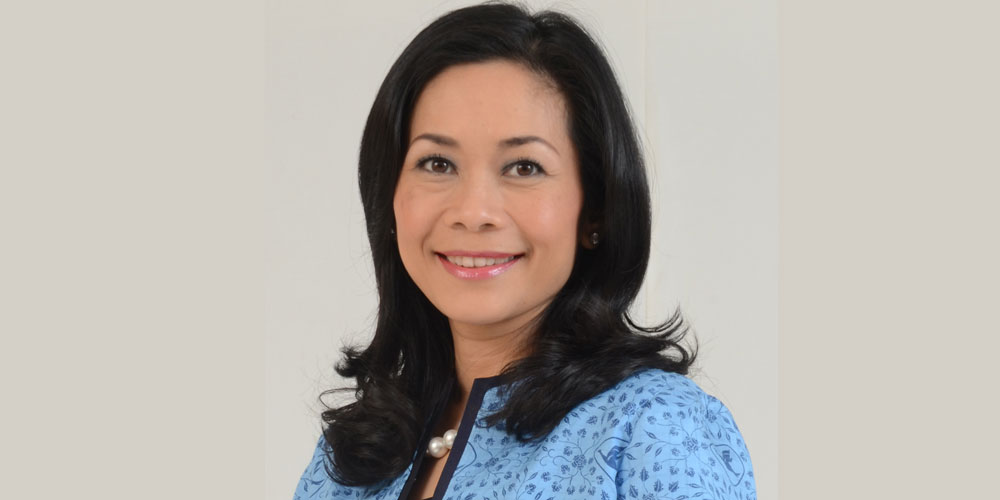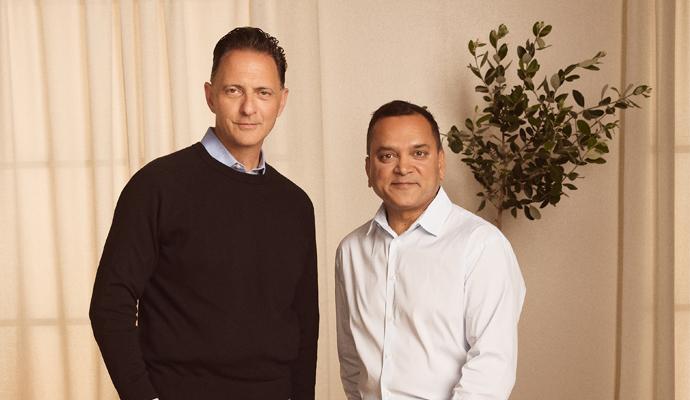Blue Bird takes on the future of mobility in Indonesia
President director Noni Purnomo explains how an ambidextrous leadership style is helping her prepare her family’s transportation and logistics firm for the post-pandemic world.
This interview is part of the Inside the Mind of the CxO series, which explores a wide range of critical decisions faced by chief executives around the world.
The COVID-19 crisis hit the Indonesian transport sector hard. Before the pandemic, president director of PT Blue Bird Tbk Noni Purnomo and her team were riding a wave of success, kicking off 2020 with plans to introduce an additional fleet of zero-emissions taxis. By March of that year, revenue was down 70 percent and the company’s ambitions to be the catalyst for electric vehicle adoption in Indonesia were quickly put on hold.
Since its inception in 1965 by Purnomo’s late grandmother, Blue Bird — which, besides its taxi business, has holdings in containers, heavy equipment, and logistics — has been a market leader and innovator. The company was built on a belief in the responsibility it had to its employees, and to the many thousands more who used and required its services every day. During the pandemic, Purnomo relied on her grandmother’s teaching to ensure that Blue Bird would not only survive but grow stronger.
Focusing on this core mission, and with a renewed sense of optimism, trust, and hope, Purnomo has focused on making Blue Bird lean and agile. In a video interview with strategy+business, she explained how an ambidextrous style of leadership — one that enabled her and her team to both implement and explore — sustained her company.
S+B: How would you describe your leadership style?
PURNOMO: I adhere to the philosophy of my late grandmother and founder of Blue Bird, Mutiara Djokosoetono, which is: “Only happy people can make other people happy.” The type of happiness that my late grandmother wanted to give and wants everyone in the company to feel is the happiness of giving.
Before my grandmother passed away, she told me that our responsibility as third-generation company leaders is not just to the shareholders or family members; our responsibility is to the 200,000 people whose lives rely on our company. That’s the main reason we need to keep this company sustainable — it’s what drives me every day.
As a leader, I think it’s very important to always have a purpose, and for me what’s important is the purpose beyond numbers. That’s what helped me face difficult challenges, including the latest pandemic. In the 48-year history of Blue Bird, I don’t think we’ve ever been hit so badly. If we focused only on the numbers, I would be incredibly frustrated; our revenue was down by 70 percent in March and April [of 2020], so you can imagine the impact on us.
But guided by our purpose, we gathered the team together and made a pact that we would survive this for everyone. I had a new title given to me by my HR director. He said, “You are changing into an ambidextrous leader” — someone who is strategic but can also manage implementation. As leaders we should do both: prioritize and manage the crisis while at the same time preparing ourselves for the future.
I’m a trusting person; I strongly believe in teamwork. I also strongly believe that nobody is supposed to be perfect. The main job of a leader is to be able to spot the strengths and weaknesses of each individual team member and put the right person in the right place at the right time.
S+B: What lessons have you learned about your own organization during the crisis?
PURNOMO: Our purpose remains the same, but the way we do business and the way we see ourselves has changed. My number one lesson was ensuring we understood our core strength, which is the service we provide. Our most valuable asset is not the vehicles but the people, and that’s what we’re focusing on. In times of disruption, people often change or try to be like their competitors, which is distracting. They forget to concentrate on their own core strength.
The main job of a leader is to be able to spot the strengths and weaknesses of each individual team member and put the right person in the right place at the right time.”
During the pandemic, there has been a change to a “new normal.” By understanding that new normal and our customer needs, we identified four factors that will shape our future strategy. One is the importance of a low-touch economy. People still need to move, and transportation is still needed — it’s just they want to have it be as low touch as possible. It’s why we’ve been focusing on developing our reservation service, our e-money, and the noncash payment service, both for our customers and for our own drivers.
We’ve already piloted a cashless ecosystem in Bali. Our drivers there are using a cashless process to get their commission, to pay for their petrol, to pay for the tollway, and to pay for their food. Plus, we launched our COD, or Chat-Order-Delivery, service [for delivery of household items].
The second factor is that hygiene is the new currency. We always make sure that our vehicles are in excellent condition and our drivers are healthy. The third factor is about finding new ways of engaging, whether it’s with our customers or internally with our employees; to do so, we adopted new digital ways of communicating. And then the fourth factor is exploring new businesses. How can we leverage ourselves? Because my ambidextrous methodology is to be able to exploit and explore at the same time — what can we exploit in this moment and what can we explore in the future?
S+B: How did you manage the workforce transformation that was required?
PURNOMO: The most difficult aspect to manage was operations, because those employees have to be in the depot and there are restrictions on numbers because of the pandemic. Another very difficult challenge that we had to face was driver training, because we always did training face-to-face. We had to change to digital training — and we had to do it quickly.
Being able to identify which jobs, not just which departments, can and can’t work from home is the trick. It depends on the job scope, but we’re moving toward a hybrid model.
S+B: From a business model perspective, how has COVID-19 affected the broader business community in Indonesia?
PURNOMO: Unfortunately, the pandemic has hit a lot of businesses, and many have failed to survive. For those of us who’ve had the privilege to survive through this pandemic, there’s a lot to learn.
One challenge that we had to face [during the pandemic] was driver training, which we always did face-to-face. We had to change to digital training — and we had to do it quickly.”
One key learning for me is the importance of having an open mind. There’s been a lot of challenges that we’ve faced as a corporation during our 48 years. We’ve been successful and a market leader, but we suddenly needed to transform. It was important to have an open mind and to learn from [others] around the globe, because the revolution that is happening at this moment is a borderless revolution.
Another key lesson is the need to be agile to face challenges; we needed to be lean. At the beginning of 2020, we were focused on changing the organization from a slow elephant into a lean cheetah. For example, in late March when the pandemic was accelerating, I said to my IT people, “You’ve got two sprints to release BirdKirim [an app update] in the MyBlueBird app.” This would probably take six months under normal circumstances; they had four weeks. During the crisis, we needed to save costs, but not just by cutting costs. We needed to make our organization efficient. That does not mean cutting our limbs; we needed to be able to move to become a cheetah.
Luckily for us, we had already started our transformation process to be more agile, so the pandemic accelerated the process instead of dragging us down. I’m an optimist; there’s always a silver lining or blessing in disguise. This is something my late grandmother instilled in me. If there was no pandemic, our transformation couldn’t have been done as quickly and as successfully as it has been.
S+B: Do you have any expectations about how quickly Indonesia will recover from the pandemic?
PURNOMO: I think the World Bank released that our growth was negative in 2020, but we see signs of hope in 2021. The business community is still very cautious, projecting upward of 4 percent growth rather than anything bigger.
We hope by the second half of the year we’ll be able to see significant improvement. But the impact on business will be lagging. For us, in January to February 2020, our revenue was higher than January to February of 2019; we were really at the start of a takeoff. Our target is to reach 90 percent of our January/February 2020 revenues by the end of 2021.
What’s important in this moment is continuing to manage our costs. We can be a bit positive because we’ve managed to reduce our overhead costs. We’ve prioritized the important investments, including planning to invest in artificial intelligence, to help make our operation more efficient and more productive.
S+B: When you’re talking about forecasting, how does it differ now from a typical year?
PURNOMO: It’s so different. Midterm for us used to be five years. Now three years is already long term. One year is midterm. Quarterly is the realistic way of doing budgets.
S+B: What types of plans are you making as you look further out?
PURNOMO: Our medium-term plan is to become a mobility access service company. We want to be able to provide service through multichannel reservation. That’s why we enhanced our app, so that people can use our service through our own app, and we partnered with [a company that] people called our competitor, Gojek, so that people can also access our service through its app. We also worked with PT Kereta Api Indonesia, which is a train company in Indonesia. Now customers can book our service through their app as well, including payment.
We’re opening up channels, whether it’s digital channels or nondigital channels. What we’re focusing on now is: How can we provide transportation solutions to corporations and also to retail users? We have taxis, but we also have non-taxi vehicles under our Golden Bird brand that can be booked per trip, per hour, or even for a whole year with or without a driver. We have buses that can be used for employee transportation, which is increasingly popular at this moment, as some companies prefer their employees to avoid public transport during the pandemic.
In other areas, we’re working with the supermarket Indogrosir, we’re working with e-commerce companies such as ruparupa.com, and so on. We strongly believe that business is moving toward collaboration and networking. These are the new types of services that would benefit the public the most.
S+B: What role does sustainability play in the future resilience of your organization?
PURNOMO: Sustainability has been part of our DNA since the very beginning. My late grandmother and my father insisted on making sure that every single vehicle from our depot was in prime condition. That derived from our care for the environment, because if the car is in prime condition, then the CO2 is being well managed.
We ensure that each vehicle is being maintained regularly, and we make sure that the used oil is being managed so that it doesn’t create carbon offsets. We’re not fully there yet, but since the very beginning, we’ve had an idea about how we manage the environmental factor. In the early 1980s, when Indonesia had only three engine analyzers [to diagnose engine issues], Blue Bird had one of them.
My first job at Blue Bird was to put a converter in our taxis, converting from petrol to CNG [compressed natural gas]. We imported CNG and the converter from New Zealand at that time.
S+B What are some of the challenges in moving toward an electric fleet?
PURNOMO: When the electric vehicle opportunity emerged, we were the first in Indonesia to get excited. We have the means, because we could choose our vehicle fleet; we have the infrastructure; we have the maintenance facilities. If anyone was going to adopt this new technology, we could do it.
Petrol and maintenance is about 23 percent of our revenue. We have our own maintenance facilities, with our own warehouses to house spare parts. We’re using SAP and ERP systems to monitor every single spare part being used by each vehicle. By using electric vehicles, these two costs can be significantly reduced. Plus, on top of the direct cost savings, we would have incremental savings by using electric vehicles. That’s why we got really excited.
We launched our first electric taxi in Indonesia, working with the government and other institutions, because we wanted to be the catalyst for electric vehicle adoption in Indonesia. Once it’s being used by public transport, it’s easier for commercial transport, which then makes it more easily adopted by the public.
We worked together with PLN [Perusahaan Listrik Negara], the national electric company, to study where to put the charging stations. Taxis go around randomly, so understanding the traffic movement helped PLN understand where to put charging stations.
At this moment, because of the COVID-19 situation, we need to postpone our electric vehicle adoptions because it requires huge capital. We’ve already ordered a fleet, but it’s still waiting in a port in China to be exported until the situation stabilizes. But we still want to continue the adoption of electric vehicles into our fleets.
S+B: What’s your opinion on the potential impact of autonomous driving technology on your business and workforce?
PURNOMO: I think a lot of global companies are investing in autonomous vehicles; we’re learning about it, and we’re getting ourselves ready for the technology. We’re investing a lot in our technology infrastructure so that when Indonesia can adopt autonomous driving, we will have the infrastructure ready.
However, I think the adoption of autonomous driving in Indonesia will be slow and limited to closed areas. The idea of autonomous driving is based on two things: safety and efficiency. If I have a huge plantation or a mine, it would be safe and efficient for my company to use autonomous driving to do the servicing instead of people. This trend will expand to logistics with autonomous driving trucks. We’re going to do a pilot project to gauge safety, monitoring the weight and the capacity that vehicles are carrying.
I think the reason developed countries like Germany have adopted [autonomous driving] faster is because it’s expensive to get a human driver. Social, political, and economic factors and decisions will drive the pace of its adoption.
Author profiles:
- Lukmanul Arsyad is a financial assurance specialist focusing on the automotive industry. Based in Jakarta, he is a partner with PwC Indonesia.
- Kieran McCann is head of content and thought leadership for PwC Australia.




